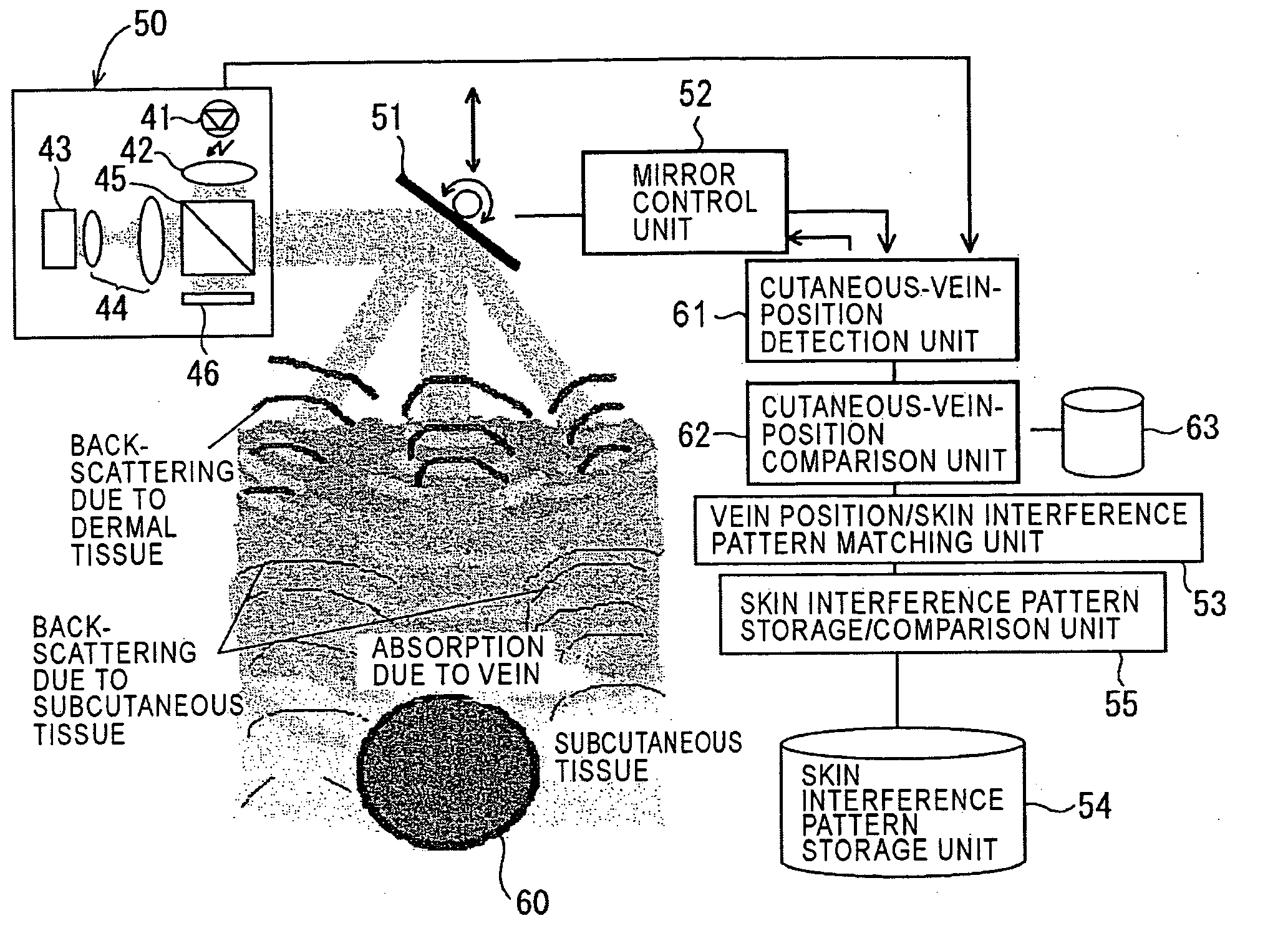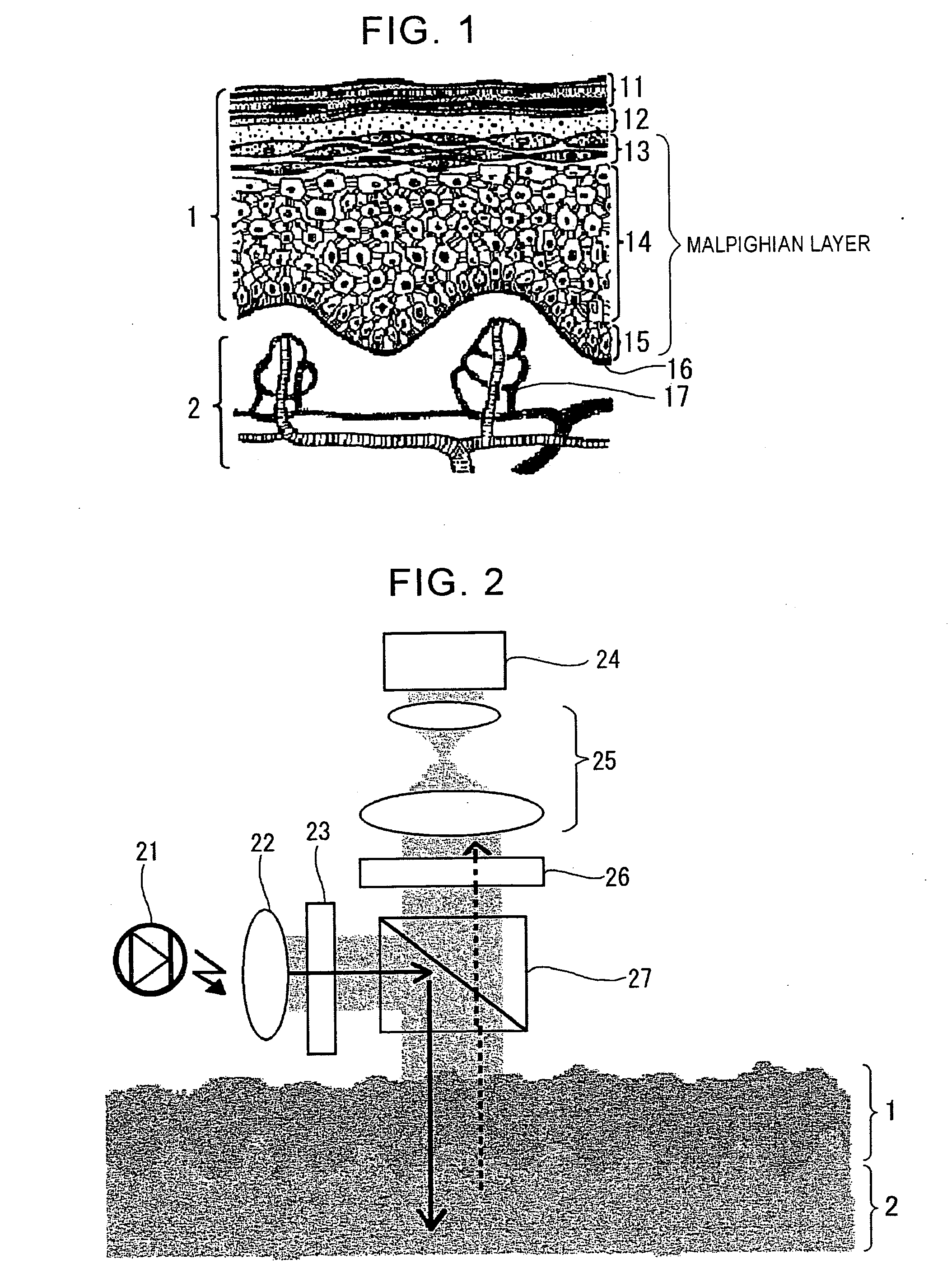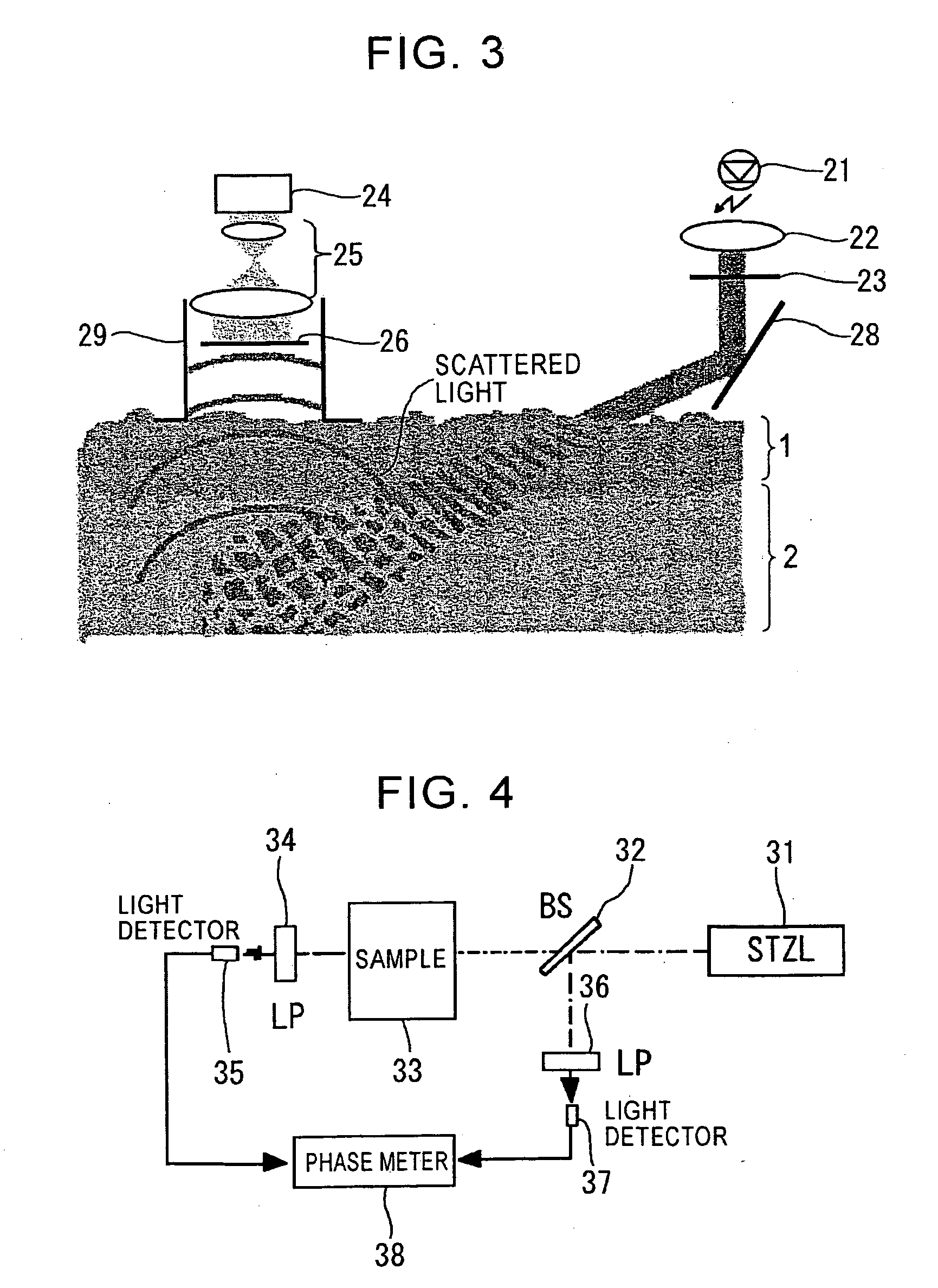Method of detecting biological pattern, biological pattern detector, method of biological certificate and biological certificate apparatus
a detection method and a technology of biological patterns, applied in the field of new biometric pattern detection methods and biometric pattern detection devices, can solve the problems of difficult visual observation of the skin layer tissue, difficult visual observation from the outside, and it is almost impossible for other persons to forge such a pattern, so as to reduce adverse effects, effectively detect, and spread easily
- Summary
- Abstract
- Description
- Claims
- Application Information
AI Technical Summary
Benefits of technology
Problems solved by technology
Method used
Image
Examples
Embodiment Construction
[0031] Detailed description will be made below regarding a biometric pattern detecting method, a biometric pattern detecting device, a biometric authentication method, and a biometric authentication device, according to the present invention with reference to the drawings.
[0032] For example, the biometric authentication using the fingerprints has a risk of forgery by other persons since the impressions (fingerprints) are readily left on another object, and can be easily observed. As a countermeasure, there is the need to perform living-tissue discrimination for determining whether or not the detected fingerprints have been acquired from the live tissue without unauthorized means. The reason is that the biometric authentication using the fingerprints is essentially measurement wherein the tissue structure of the dead tissue having no nucleus such as the horny layer of the skin is optically or electrically detected.
[0033] The security performance of the biometric authentication usin...
PUM
 Login to View More
Login to View More Abstract
Description
Claims
Application Information
 Login to View More
Login to View More - R&D
- Intellectual Property
- Life Sciences
- Materials
- Tech Scout
- Unparalleled Data Quality
- Higher Quality Content
- 60% Fewer Hallucinations
Browse by: Latest US Patents, China's latest patents, Technical Efficacy Thesaurus, Application Domain, Technology Topic, Popular Technical Reports.
© 2025 PatSnap. All rights reserved.Legal|Privacy policy|Modern Slavery Act Transparency Statement|Sitemap|About US| Contact US: help@patsnap.com



